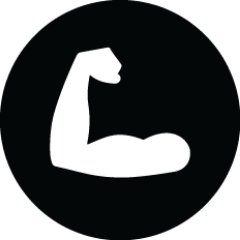
Customer success (CS) is one of the most critical functions of a startup, especially a business-to-business (B2B) software-as-a-service (SaaS) startup. Your startup’s success depends on educating and keeping customers — exactly what CS professionals are equipped to do. Moreover, when your CS team does its job well, customers turn into advocates, each referring new customers to your business.
If you have the budget, you’ll want to hire someone who has scaled CS at a company similar to yours (in terms of product, sales model, implementation strategy, expansion strategy, etc), from your company’s stage all the way through the initial public offering (IPO). In truth, it’s easier to find a needle in a haystack than to find this mythical ideal hire.
Instead, let’s focus on finding you the best first customer success hire for your startup, starting with the basics.
Generalists: At early-stage startups, you need a jack-of-all-trades who can do whatever is needed, whenever it’s needed. You need someone adaptable and resilient to put out fires while thinking strategically and working proactively. You need someone who can build relationships with customers while also analyzing customer data and trends, turn customer thoughts into focused feedback for the product, scale support, and much more. As your CS department grows, you’ll want folks to specialize: dedicated onboarding specialists, expansion specialists, customer success managers (CSMs) for different customer segments, etc. But at an early-stage startup, hire a generalist.
Coachable, Lifelong Learners: When you work in customer success, you’re constantly learning on your feet. You’ve got to be naturally curious about customers and your product. At an early-stage startup, you must experiment and try different tactics, particularly while working toward finding product-market fit. In addition to hiring for lifelong learners, I recommend hiring for coachability to ensure you hire someone who can grow with your company.
Emotional Intelligence: Every successful CS leader I’ve known exhibits strong emotional intelligence; this is no surprise, given how important it is for CS to have empathy and be able to control their emotions and read customers’ emotions. Since CS often manages angry customers, I also recommend hiring for mindfulness. The ability to stay intentionally focused without passing judgment helps ensure appropriate reactions to defuse charged situations.
Leadership: Your first CS hire won’t be your last. Hire someone who can lead your future CS department — a leader with grace and compassion. Speaking of leading a department, you’ll need your CS lead to have a documentation-first mindset to take what they do, turn it into scaleable processes and teach that to others.
Now that we’ve established the overall traits, let’s go over some factors to keep in mind as you hire your first CS lead.
Product
How complicated is your product? Is specialized knowledge required to understand your product? At Liquid, I’ve found that while no specific expertise is necessary, experience with how businesses contract with freelancers and vendors makes the steep product learning curve much more manageable.
Market
Do your customers speak their own lingo? For example, many of our customers are finance leaders, so it’s beneficial to hire folks knowledgeable about accounting as it pertains to working with contractors and vendors. However, since operations leaders also use our product, finance and bookkeeping expertise are purely optional. Additionally, since many of our customers are agencies or social enterprises, it’d be helpful to hire folks with backgrounds in those industries.
Sales And Pricing Model
Very expensive products with a high-touch sales model will probably require high-touch customer success. “Freemium” products relying on product-led growth, self-service education, and low-touch sales will likely require someone who can more quickly operationalize and scale CS.
Implementation Strategy
How complicated is your product implementation? How quickly do customers see value? Is onboarding straightforward and the same for everyone, or does it vary depending on the specific needs/circumstances of each customer? If it varies, you’ll need someone who asks the right questions to craft customized onboarding/implementation plans for customers. In this case, look for past experience in consulting (or a consultative mindset).
At Liquid, we’ve found that implementation can differ quite a bit between customers depending on a variety of factors — including whether the main users have finance or operations backgrounds, whether they use work orders, how much they care about compliance, whether they are moving from existing tools versus hiring their first freelancer, how many vendors they have, and whether they think of their vendors as a virtual talent bench — but not so much so that custom onboarding plans are needed for each customer. In our case, CS needs to provide high-touch customized onboarding when appropriate, while also operationalizing, scaling, and improving onboarding in general.
Expansion Strategy
What does expansion mean to your company? Is it about selling more licenses? Selling on professional services? Upselling on additional features or higher-level plans? Different expansion strategies require different skill sets. No matter what the expansion strategy, I recommend hiring someone data-savvy enough to segment customers appropriately to identify and pursue potential expansion opportunities.
Company Structure
Who will your first CS hire report to? While I recommend having a customer success lead report to the CEO, I’ve also seen a CS lead report to the chief operating officer (COO), head of sales, and even the chief of staff. No matter how you decide to structure your organization, be intentional about this. Where CS sits in your company says a lot to your employees (and to your customers) about how you view your customers. Choose thoughtfully.
Don’t Delay Hiring Your First Customer Success Lead
As I said at the start, customer success is one of the most important pieces to building a successful company. It’s never too early to hire your first CS lead.
And once your CS lead has created repeatable processes and you’re ready to scale, empower that person to hire a team. I’ve found that non-traditional backgrounds like hospitality, retail, and education lay an excellent foundation of soft skills for CS excellence. If you have the time and resources to train someone (and a product that doesn’t require subject matter expertise), you’re likely to get excellent value hiring folks new to the technology industry.
Are you ready to start building your customer success department?
This article was originally published in Forbes.
Yolanda Lau is an entrepreneurship and small business consultant and a co-founder and partner of Lau Labs. She loves to read. Since 2010, she has been focused on “solving” the “problem” of ambitious, educated, talented women and men “opting out” of the traditional workforce for personal reasons. In 2015, she joined forces with two other MIT alumnae to start FlexTeam — a mission-based micro-consulting firm that matches talented mid-career women with meaningful, challenging, temporally flexible, remote project-based work opportunities. FlexTeam’s clients are businesses of all sizes across all industries and sectors and their most requested projects are market research / analysis, competitor research, financial models / analysis, and business strategy. FlexTeam is also the team behind Liquid.













